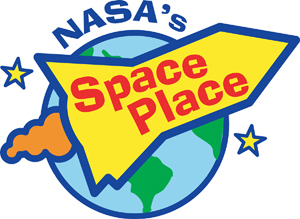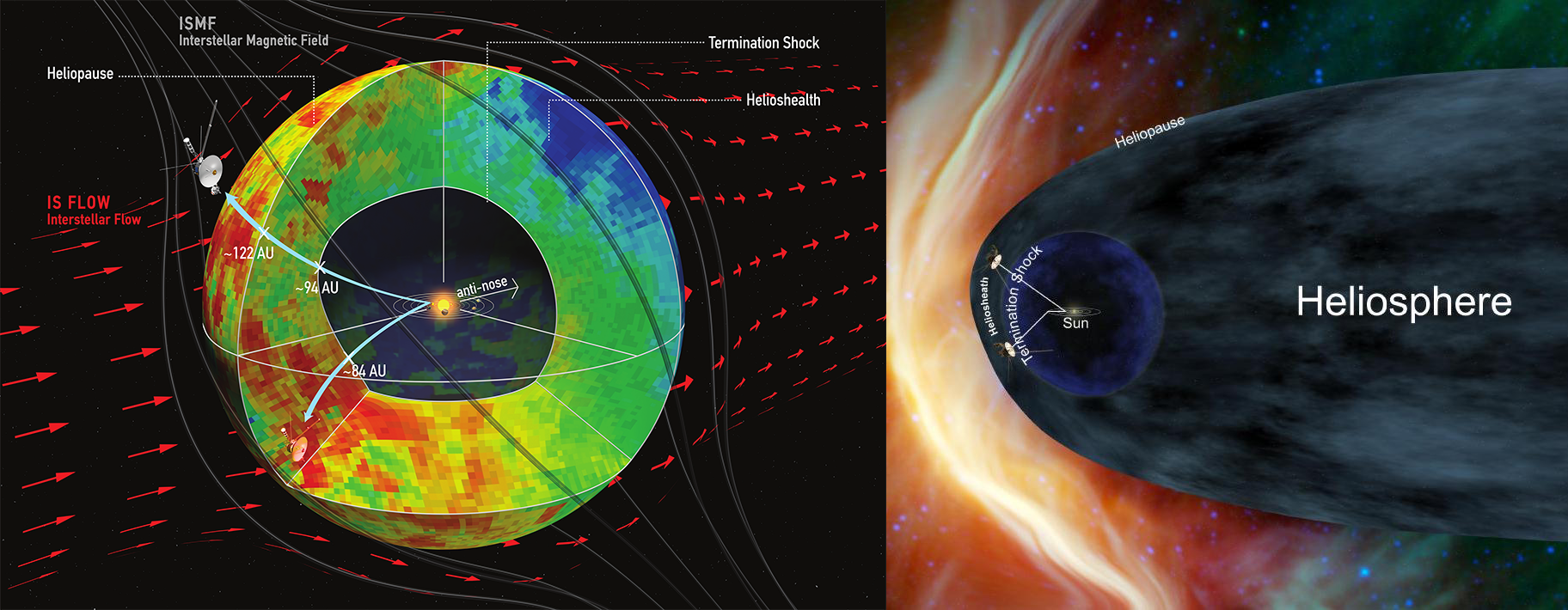When Stamatios (Tom) Krimigis was selected for the Voyager mission in 1971, he became the team’s youngest principal investigator of an instrument, responsible for the Low Energy Charged Particles (LECP) instrument. It would measure the ions coursing around and between the planets, as well as those beyond. Little did he know, though, that more than 40 years later, both Voyager 1 and 2 still would be speeding through space, continuing to literally reshape our view of the solar system.
The solar system is enclosed in a vast bubble, carved out by the solar wind blowing against the gas of the interstellar medium. For more than half a century, scientists thought that as the sun moved through the galaxy, the interstellar medium would push back on the heliosphere, elongating the bubble and giving it a pointy, comet-like tail similar to the magnetospheres—bubbles formed by magnetic fields—surrounding Earth and most of the other planets
“We in the heliophysics community have lived with this picture for 55 years,” said Krimigis, of The Johns Hopkins University Applied Physics Laboratory in Laurel, Maryland. “And we did that because we didn’t have any data. It was all theory.”
But now, he and his colleagues have the data. New measurements from Voyager and the Cassini spacecraft suggest that the bubble isn’t pointy after all. It’s spherical.
Their analysis relies on measuring high-speed particles from the heliosphere boundary. There, the heated ions from the solar wind can strike neutral atoms coming from the interstellar medium and snatch away an electron. Those ions become neutral atoms, and ricochet back toward the sun and the planets, uninhibited by the interplanetary magnetic field.
Voyager is now at the edge of the heliosphere, where its LECP instrument can detect those solar-wind ions. The researchers found that the number of measured ions rise and fall with increased and decreased solar activity, matching the 11-year solar cycle, showing that the particles are indeed originating from the sun.
Meanwhile, Cassini, which launched 20 years after Voyager in 1997, has been measuring those neutral atoms bouncing back, using another instrument led by Krimigis, the Magnetosphere Imaging Instrument (MIMI). Between 2003 and 2014, the number of measured atoms soared and dropped in the same way as the ions, revealing that the latter begat the former. The neutral atoms must therefore come from the edge of the heliosphere.
If the heliosphere were comet-shaped, atoms from the tail would take longer to arrive at MIMI than those from the head. But the measurements from MIMI, which can detect incoming atoms from all directions, were the same everywhere. This suggests the distance to the heliosphere is the same every which way. The heliosphere, then, must be round, upending most scientists’ prior assumptions.
It’s a discovery more than four decades in the making. As Cassini ends its mission this year, the Voyager spacecraft will continue blazing through interstellar space, their remarkable longevity having been essential for revealing the heliosphere’s shape.
“Without them,” Krimigis says, “we wouldn’t be able to do any of this.”
To teach kids about the Voyager mission, visit the NASA Space Place: https://spaceplace.nasa.gov/voyager-to-planets
Caption: New data from NASA’s Cassini and Voyager show that the heliosphere — the bubble of the sun’s magnetic influence that surrounds the solar system — may be much more compact and rounded than previously thought. The image on the left shows a compact model of the heliosphere, supported by this latest data, while the image on the right shows an alternate model with an extended tail. The main difference is the new model’s lack of a trailing, comet-like tail on one side of the heliosphere. This tail is shown in the old model in light blue.
Image credits: Dialynas, et al. (left); NASA (right)
This article is provided by NASA Space Place. With articles, activities, crafts, games, and lesson plans, NASA Space Place encourages everyone to get excited about science and technology. Visit spaceplace.nasa.gov to explore space and Earth science


